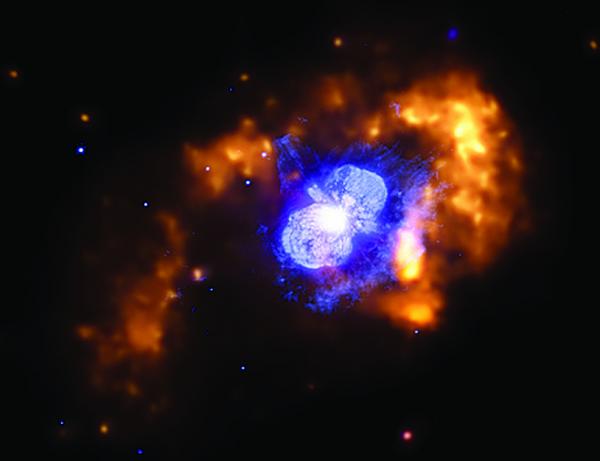The most distant supernova ever discovered
UC Irvine cosmologists have discovered the two most distant supernovae ever used using a new technique that can help find dead stars at the edge of the universe.
This method has the potential to allow astronomers to study some of the first supernovae and expand our understanding of galaxy formation, galaxy change over time as well as Earth formation.
Jeff Cooke, McCue's honorary doctor of physics and astronomy, who reported on the July 9 issue of Nature, said: 'When stars explode, they push matter into space. Finally, gravity breaks down the material to form a new star. These new stars may have planets around them, such as the Earth. '
The supernova explosion that Cooke and colleagues discovered occurred 11 billion years ago. The farthest supernova explosion known previously appeared about 6 billion years ago.
 Eta Carinae, a star in the Milky Way galaxy, 7500 light years from Earth, will become a supernova similar to what Jeff Cooke and colleagues found. In contrast, the newly discovered supernova is millions of times farther away. (Photo: NASA)
Eta Carinae, a star in the Milky Way galaxy, 7500 light years from Earth, will become a supernova similar to what Jeff Cooke and colleagues found. In contrast, the newly discovered supernova is millions of times farther away. (Photo: NASA)
The supernova explosion occurs when a giant star (weighing more than 8 times the sun) ends its life in a big and extremely bright explosion. Cooke studied larger stars (50 to 100 times the mass of the sun) pushing a portion of its mass into the surrounding areas before dying. When such stars exploded, nearby matter lit up for years.
Often, cosmologists search for supernovae by comparing photos taken at different times in the same airspace and looking for changes. Any new light source could be a supernova.
Cooke also applies this idea.He used photographs taken over the years and compared them to photos from other years.
Cooke said: 'If you organize these photos into a stack, you can look further and see fainter objects. It's like in photography when you open the shutter for a long time. You will gain more light '.
Implementing this idea with photos from the Canadian-French-Hawaii Telescope in Hawaii, Cooke discovered objects that seemed to be supernovae.He used the Keck telescope to observe in more detail the spectrum of light that each object emitted. Finally, he determined that they were supernovae.
Cooke commented: 'The universe is about 13.7 billion years old, so we're observing the first stars to be formed'.
Last year, Cooke and other scientists at UCI's Center for Cosmology found a cluster of galaxies in the early formation phase that appeared 11.4 billion years ago.The galaxy cluster, called LBG-2377, provides cosmologists with unprecedented understanding of galaxy formation and the evolution of the universe.
Elizabeth Barton, James Bullock and Erik Tollerud of UCI, along with Mark Sullivan of Oxford University, Avishay Gal-Yam of the Benoziyo Center for Astrophysics in Israel, and Ray Carlberg of the University of Toronto, also contributed to the study.
The study was funded by the National Science Foundation and generous donations from Gary McCue for the Center for Cosmology.
- Earth used to catch supernova dust
- Discover new supernova
- Build 3D core map of a supernova
- The supernova explosion is 10.5 billion light-years away from Earth
- The supernova is 20 times brighter than the Milky Way
- Discover new forms of supernovae
- Mysterious 2,000-year-old supernova
- Strange rays from the cosmos excite the ancient people with two legs
- The supernova is only 14 years old, causing fever for unexpected reasons
- Learn about supernovae and supernovae
- Photos, videos and three-dimensional models of giant supernova
- Create supernova explosions in the laboratory
 Van Allen's belt and evidence that the Apollo 11 mission to the Moon was myth
Van Allen's belt and evidence that the Apollo 11 mission to the Moon was myth The levels of civilization in the universe (Kardashev scale)
The levels of civilization in the universe (Kardashev scale) Today Mars, the sun and the Earth are aligned
Today Mars, the sun and the Earth are aligned The Amazon owner announced a secret plan to build a space base for thousands of people
The Amazon owner announced a secret plan to build a space base for thousands of people